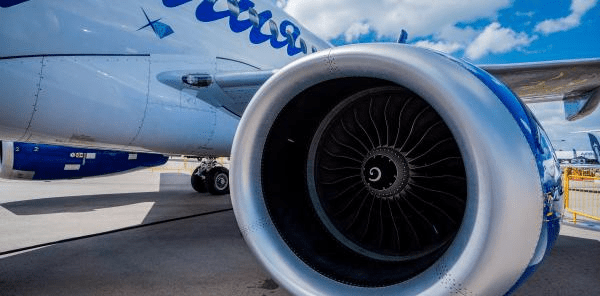Safran, a French aircraft engine, rocket engine, aerospace components and defense corporation, projected that 38,000 new aircraft will be delivered over the next 20 years (2022-2041).
Of that total, 27,500 would correspond to narrow-body aircraft, 6,000 wide-body aircraft and 4,500 regional aircraft.
In 2021, emissions from product use continued to be heavily affected by the impact of the Covid-19 crisis on aircraft delivery volumes.
Between 2019 and 2021, the intensity indicator was affected by the crisis, as well as by the difficulties encountered by Boeing in the 737 MAX and 787 programs, which have resulted in a significant gap between the deliveries of equipment and engines by Safran and aircraft deliveries by Boeing.
The pandemic had an unprecedented impact on air traffic: according to estimates by the International Air Transport Association (IATA), passenger-kilometres fell 65.8% in 2020 and 58.4% in 2021 (compared to 2019).
International traffic was the most affected, with an average decrease of 75.5% in 2021 compared to 2019, while domestic traffic decreased 28.2%.
However, according to Safran, the underlying fundamentals of air traffic growth, in the medium and long term, remain:
Global growth trends that are changing but remain strong and beneficial for air transport.
Higher load factors to gain market share and increase profitability in airline operations.
Demand in regions of strong economic growth (in particular China, Southeast Asia and India), and renewal of the existing fleet (mainly in North America and Europe).
Safran
Air traffic growth has proven resilient to previous global economic crises (in 1991, 2001 and 2008), and Safran expects a return to 2019 traffic levels between the end of 2022 and 2025 (depending on market segment), followed of solid and lasting growth, despite the increasing pressure of ecological impacts on air transport.
Safran has set itself the following objectives for the evaluation of its Scope 3 emissions derived from the use of the product:
Reduce its emissions per passenger-kilometre by 42.5% by 2035 compared to 2018, or an average of 2.5% per year.
This objective supposes the incorporation of sustainable fuels corresponding to the path integrated in the Sustainable Development Scenario of the International Energy Agency, which implies the use of sustainable aviation fuel (SAF) in proportions of 48% in 2050 and 63% in 2060.
The Safran target is consistent with the SBTi minimum requirement for a well below 2°C global warming scenario (linear annual reduction of at least 2.5 percent).
![]()

